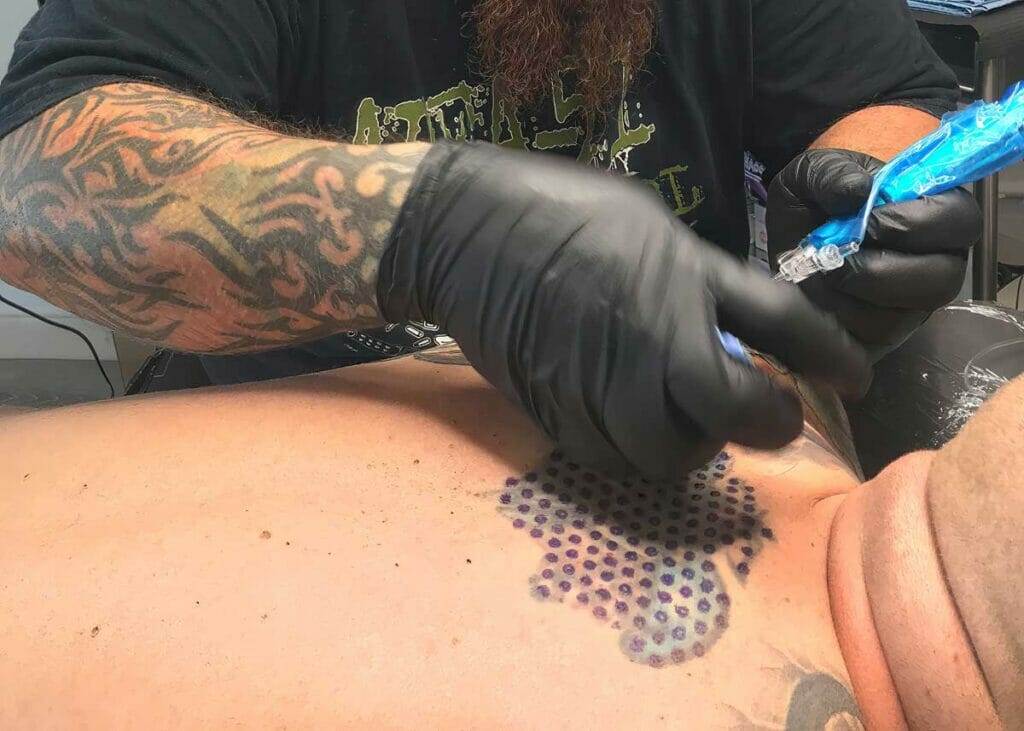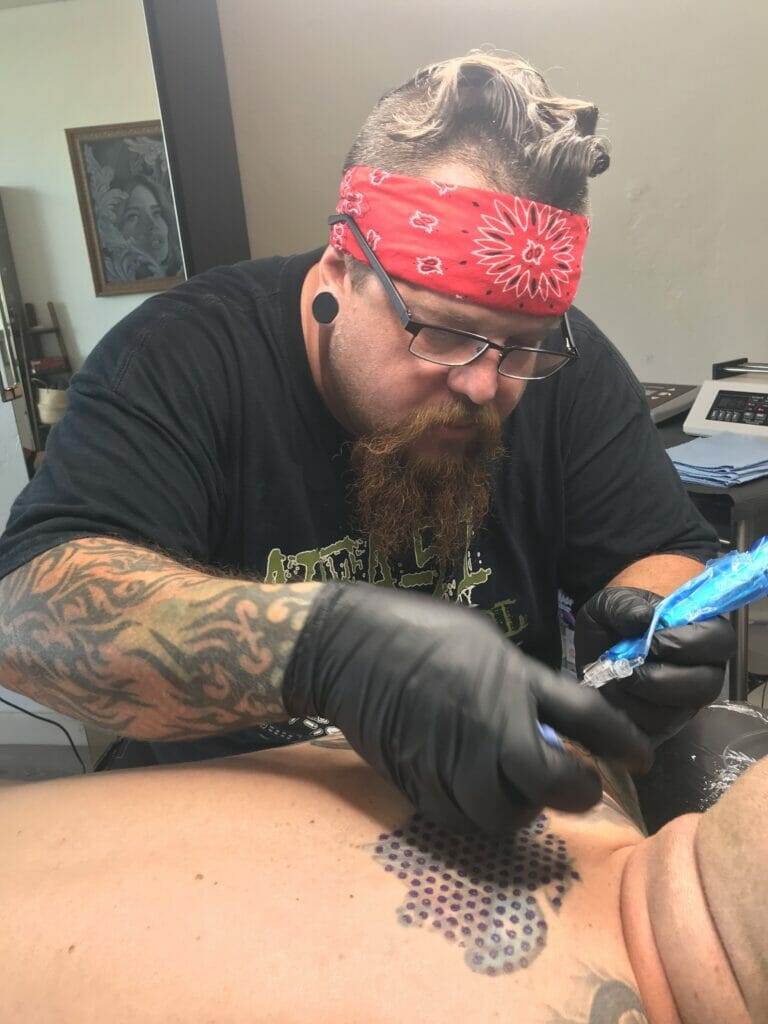Traditional laser tattoo removal has long been the go-to method for those seeking to remove unwanted tattoos. However, it is not without its risks and limitations. Non-laser tattoo removal has emerged as a safer and more effective alternative for those looking to get rid of their tattoos. This article will explore the benefits and techniques of non-laser tattoo removal, as well as compare it to traditional laser tattoo removal.
Understanding the Risks of Laser Tattoo Removal
Laser tattoo removal works by using high-intensity laser beams to break down the ink particles in the skin. While it can be effective in removing tattoos, it also comes with a number of risks and potential side effects. These include scarring, hyperpigmentation (darkening of the skin), hypopigmentation (lightening of the skin), and even infection or allergic reactions.
Non-laser tattoo removal, on the other hand, does not involve the use of lasers and therefore eliminates many of these risks. By using alternative methods such as saline solution or TCA peels, non-laser tattoo removal can effectively fade or remove tattoos without causing damage to the surrounding skin.
The Benefits of Non-Laser Tattoo Removal
One of the main benefits of non-laser tattoo removal is its reduced risk of scarring and hyperpigmentation. Laser tattoo removal can sometimes cause scarring or changes in skin pigmentation, especially in individuals with darker skin tones. Non-laser methods, such as saline solution or TCA peels, are less likely to cause these complications.
Additionally, non-laser tattoo removal can be more effective for certain types of tattoos. Laser tattoo removal works best on tattoos with dark ink and lighter skin tones, while non-laser methods can be more effective for tattoos with colored ink or on individuals with darker skin tones. This makes non-laser tattoo removal a more versatile option for a wider range of individuals.
How Non-Laser Tattoo Removal Works
Non-laser tattoo removal works by using different techniques to break down the ink particles in the skin. One common method is saline tattoo removal, which involves injecting a saline solution into the skin to help draw out the ink. Another method is TCA (trichloroacetic acid) peels, which use a chemical solution to remove the top layers of skin and fade the tattoo.
These methods work by stimulating the body’s natural healing process and encouraging the skin to shed the ink particles over time. While it may take multiple sessions to achieve desired results, non-laser tattoo removal can be a safe and effective way to remove unwanted tattoos.
Types of Non-Laser Tattoo Removal Techniques
There are several different non-laser tattoo removal techniques available, each with its own pros and cons. Saline tattoo removal involves injecting a saline solution into the skin to help draw out the ink. This method is less invasive than laser tattoo removal and carries a lower risk of scarring or hyperpigmentation. However, it may require multiple sessions and can be more time-consuming.
TCA peels, on the other hand, use a chemical solution to remove the top layers of skin and fade the tattoo. This method can be more effective for certain types of tattoos, especially those with colored ink. However, it can also carry a higher risk of side effects such as skin irritation or redness.
Non-Laser Tattoo Removal vs. Laser Tattoo Removal: Which is Better?
When comparing non-laser and laser tattoo removal, there are several factors to consider. In terms of effectiveness, laser tattoo removal may be more successful in completely removing tattoos, especially those with dark ink on lighter skin tones. However, non-laser methods can be more versatile and effective for tattoos with colored ink or on individuals with darker skin tones.
In terms of risks and side effects, non-laser tattoo removal carries a lower risk of scarring and hyperpigmentation compared to laser tattoo removal. This makes it a safer option for those concerned about potential complications. Additionally, non-laser methods can be less painful and require less downtime compared to laser tattoo removal.
Cost is another factor to consider when choosing between non-laser and laser tattoo removal. While laser tattoo removal may be more expensive per session, it often requires fewer sessions overall to achieve desired results. Non-laser methods may require more sessions, but the cost per session is typically lower.
Ultimately, the choice between non-laser and laser tattoo removal depends on individual factors such as skin type, tattoo type, and personal preferences. Consulting with a qualified non-laser tattoo removal specialist can help determine the best course of action.
What to Expect During Non-Laser Tattoo Removal

During non-laser tattoo removal, the specialist will first assess the tattoo and determine the best method for removal. The number of sessions required will depend on factors such as the size and color of the tattoo, as well as individual skin characteristics.
The process itself can vary depending on the technique used. For saline tattoo removal, a saline solution is injected into the skin using a small needle. This helps to break down the ink particles and stimulate the body’s natural healing process. TCA peels involve applying a chemical solution to the skin, which causes the top layers to peel off over time.
While non-laser tattoo removal is generally less painful than laser tattoo removal, some discomfort may still be experienced during the procedure. The level of discomfort can vary depending on individual pain tolerance and the location of the tattoo.
Recovery and Aftercare for Non-Laser Tattoo Removal
After non-laser tattoo removal, it is important to follow proper aftercare instructions to ensure optimal healing. This may include keeping the treated area clean and dry, avoiding excessive sun exposure, and applying any prescribed ointments or creams.
The recovery process can vary depending on the individual and the technique used. In general, the treated area may be red, swollen, or tender for a few days following the procedure. It is important to avoid picking at any scabs or blisters that may form, as this can increase the risk of scarring.
It is also important to note that complete tattoo removal may not be achieved in a single session. Multiple sessions may be required to achieve desired results, with several weeks or months between each session to allow for proper healing.
Cost Comparison: Non-Laser vs. Laser Tattoo Removal
The cost of non-laser tattoo removal can vary depending on factors such as the size and color of the tattoo, as well as the number of sessions required. On average, non-laser tattoo removal can range from $200 to $500 per session. Multiple sessions may be required to achieve desired results, which can increase the overall cost.
Laser tattoo removal, on the other hand, can range from $200 to $500 per session as well. However, fewer sessions are typically required compared to non-laser methods. This means that while laser tattoo removal may be more expensive per session, it may ultimately cost less overall.
It is important to consult with a non-laser tattoo removal specialist to get an accurate cost estimate based on individual factors.

Why Non-Laser Tattoo Removal is the Way to Go
Non-laser tattoo removal offers a safer and more effective alternative to traditional laser tattoo removal. By using techniques such as saline removal or TCA peels, non-laser methods can effectively fade or remove tattoos without causing damage to the surrounding skin.
The benefits of non-laser tattoo removal include reduced risk of scarring and hyperpigmentation, as well as increased effectiveness for certain types of tattoos. While laser tattoo removal may be more effective in completely removing tattoos, it carries a higher risk of complications and can be more expensive.
Ultimately, the choice between non-laser and laser tattoo removal depends on individual factors such as skin type, tattoo type, and personal preferences. Consulting with a qualified non-laser tattoo removal specialist can help determine the best course of action.







